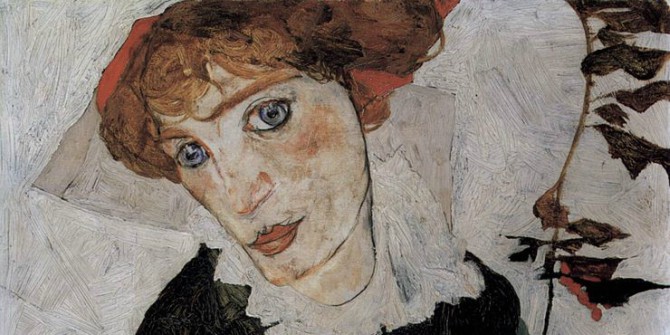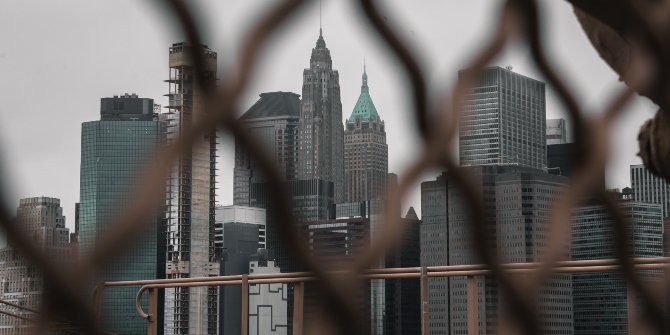
The French art market during the Occupation has been the subject of numerous publications that mostly focused on the fate of looted artworks, with limited attention given to the art market itself.
Using an original database of paintings sold at Hôtel Drouot, the main French auction house at the time, I recreate an art market price index for the period 1937-1947. The index shows that the art market in Occupied France provided one of the best available investment opportunities. Whereas the literature usually considers artworks as a poor investment, the case of occupied France shows that in extreme circumstances, artworks may prove extremely attractive investment vehicles. Indeed, during the Occupation, and if one relies on a traditional risk-return framework, gold was the only serious alternative to art. How can this observation be explained?
To understand the performance of the art market during World War II, several elements need to be considered. Following the defeat of June 1940, France was forced to pay huge occupation costs to Germany. As a result, the German occupation forces had almost unlimited means and quickly became major actors on the art market. But they were certainly not the only ones! The payment of these occupation costs, and this is crucial for our case, also forced the Vichy government to rely on the printing press to pay its dues. To limit the inflationary pressure created by these emissions, the Vichy government devised the so-called policy of the circuit: a policy which would try to develop a market for government bonds to soak excess money in circulation.
Fixed income securities are however hardly appealing in an inflationary environment and the regime therefore engaged into what nowadays would be considered as financial repression to “convince” investors to buy these bonds. For example the regime imposed measures to render sovereign bonds more attractive than equities. Dividends were limited, price increases capped and a control of ownership of stocks was devised when investors were forced to switch to nominative securities from bearer instruments. At the same time, most real goods became subject to rationing and thus hard to buy.
Even though for a vast majority of the population survival was the main goal, some actors were worried about investment opportunities. In this context, artworks, and more generally discreet assets (small and easily transportable assets that can store a large amount of value) became extremely valuable. In comparison to peace time, the ability to hide or transport wealth became crucial in occupied Paris. Characteristics of paintings, but also of precious stones, meant they could address both issues. Legality was another concern for investors. By law it was impossible to invest in gold or foreign currencies. Despite this, some investors were ready to go to the black market to acquire assets, such as gold or foreign currency, that could easily be resold abroad. For those who preferred to stay on the side of legality, the art market provided an attractive alternative. Discretion, the inflation-proof character of art, the absence of market intervention and the possibility of reselling works abroad played a crucial role in their valuation.
During wartime, illegal activities and the risk of being forced to flee the country increased the appeal of discreet assets. Contemporaneous actors, but also the press at the time, mention the apparition on the art market of people enriched by black market activities. Anecdotal evidence also suggest that small artworks were transported abroad for people who had to flee France. Even though very different in nature, both groups had an interest to hide and transport value. But was the demand for these characteristics important enough to affect prices? By comparing the price index for small and large artworks, I establish that investors were looking for smaller artworks, especially just before the German invasion and during 1942-1943, when the black market flourished.
Non-pecuniary motives to buy art, such as conspicuous consumption are often suggested to play an important role in art valuation. This point is analysed for occupied France by exploiting the distinction made by the Nazis between ‘degenerate’ and ‘non-degenerate’ artworks. Pricing of ‘degenerate’ works was indeed affected by the impossibility of engaging in their conspicuous consumption. The price difference between these two categories of artworks is clear at the beginning of the occupation, when the Nazi policy towards ‘degenerate’ artworks held in France had not been clearly spelled out. The difference gradually vanished as it became known that Hitler took a favourable view of French ‘artistic decadence’ and was not planning to get these works systematically destroyed as long as they remained in France.
Discretion does not concern only artworks. Other discreet assets, such as collectible stamps, also experienced sharp price increases. Assets which are easy to transport and hide therefore have characteristics that are valued by some investors during troubled times. The interest in discreet artworks goes beyond wartime. At any point in time, tax evaders may be willing to buy art or other discreet assets to hide illicit profits or to diminish their tax burden. As a result, when wealth and wealth inequality increase, so does demand for discreet assets. Whereas the literature traditionally attributes these price increases to social competition, this paper suggests an alternative explanation: assets that facilitate tax evasion should fetch a higher price in an environment characterized by increasing wealth inequality. The paper thus opens the door to a different interpretation of the high demand for artworks in the 1990’s in Japan or in China nowadays.
♣♣♣
Notes:
- This blog post is based on the authors’ paper Art as a Wartime Investment: Conspicuous Consumption and Discretion, The Economic Journal, December 2017
- The post gives the views of its authors, not the position of LSE Business Review or the London School of Economics.
- Featured image credit: Porträt von Wally, artist Egon Schiele (1890–1918), by The Yorck Project, Public domain
- When you leave a comment, you’re agreeing to our Comment Policy.
 Kim Oosterlinck is a professor of finance at the Université Libre de Bruxelles, SBS-EM, and a research fellow at CEPR. His research interests are in financial and economic history, finance, economics of arts and culture.
Kim Oosterlinck is a professor of finance at the Université Libre de Bruxelles, SBS-EM, and a research fellow at CEPR. His research interests are in financial and economic history, finance, economics of arts and culture.






And there was I thinking that the “healthy” volume of art sales in occupied Paris had something to do with the Nazis systematically plundering the property of their Jewish victims, taking the best pieces back to Germany and selling the rest through compliant dealers and other accomplices to genocide, meaning that many “bargains” were to be had down at L’Hôtel Drouot…
But it turns out it was just the invisible hand of the market all along. How reassuring.